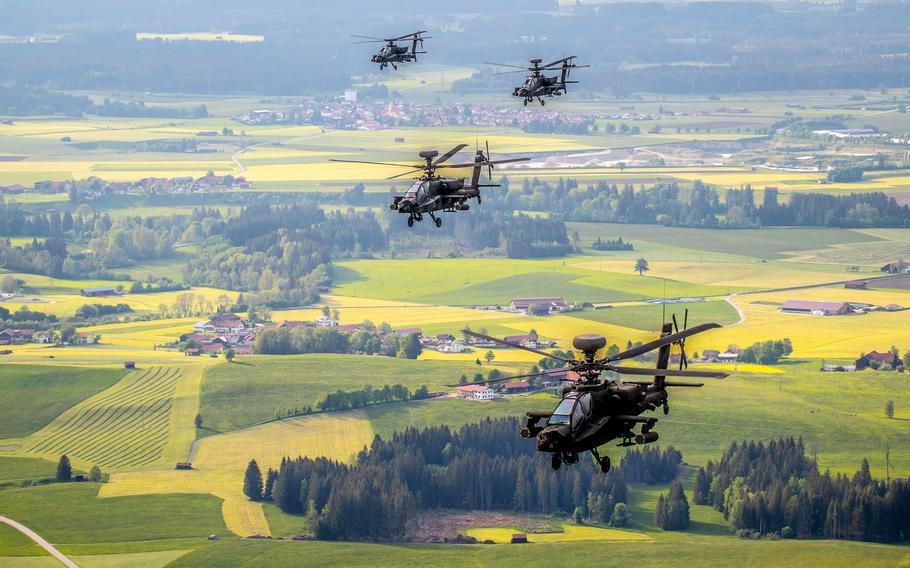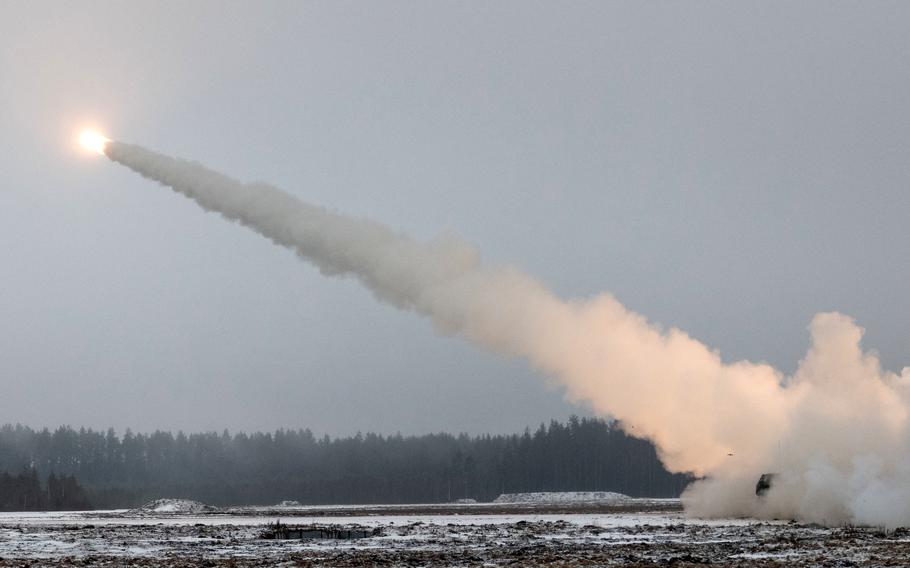
Defense Secretary Pete Hegseth has directed the Army to reduce and restructure manned attack helicopter formations and augment them with inexpensive drone swarms, among other measures outlined in a memo issued April 30, 2025. (Justin Ashaw/U.S. Army)
Defense Secretary Pete Hegseth this week ordered a broad restructuring of the U.S. Army that will trim the number of generals, merge headquarters commands and prioritize drone swarms needed to counter China’s growing military.
Hegseth directed Army leaders in a memorandum Wednesday to streamline force structure and overcome “parochial interests” to rebuild the military’s largest branch.
“To build a leaner, more lethal force, the Army must transform at an accelerated pace by divesting outdated, redundant, and inefficient programs, as well as restructuring headquarters and acquisition systems,” Hegseth wrote.
The memo calls for the largest reorganization of the Army in many years, in part by shedding weapons and units that have long been part of its identity.
Top priorities also include improving long-range precision fire and building a “Golden Dome” program intended to serve as a missile defense shield for the homeland.

In a memorandum on April 30, 2025, Defense Secretary Pete Hegseth ordered a broad restructuring of the Army. His directive calls for an improvement of long-range precision artillery fire. (Phillip Walter Wellman/Stars and Stripes)
Hegseth’s directive calls for big changes in how some fighting forces are organized. The service would reduce manned attack helicopter formations and augment those units with “inexpensive drone swarms capable of overwhelming adversaries.”
The Army also would trim armor and other aviation units under the broad directive.
The service will be expected to increase its forward presence in the Indo-Pacific “by expanding pre-positioned stocks, rotational deployments, and exercises with allies and partners to enhance strategic access, basing, and overflight,” Hegseth said.
The focus is in line with the Pentagon’s push to prioritize missions in the Pacific to counter China. The memorandum did not mention how operations in Europe would be affected or whether rotational deployments to the Continent were expected to continue.
The Pentagon has stated that U.S. allies must carry the bulk of the security burden in Europe, freeing up the U.S. to do more in Asia.
The Army also will merge two four-star headquarters, Army Futures Command and the Training and Doctrine Command, into one.
Futures Command, launched in 2018, was intended to help the Army gain a better view of its long-term needs. The necessity of a separate command to handle issues that previously were part of TRADOC’s mission was long debated in Army circles.
U.S. Army North and U.S. Army South will be combined into a single headquarters focused on homeland defense and partnership with Western Hemisphere allies, the memorandum stated.
Consolidating and realigning headquarters and units within Army Materiel Command, including the integration of the Joint Munitions Command and Army Sustainment Command, are also part of the directive.
Hegseth said the Army will reduce general officer positions in a manner that streamlines command structures “for the warfighter.” He didn’t detail how many general officer slots will be abolished.
In the tactical realm, the Army should field long-range missiles capable of striking moving land and maritime targets by 2027, Hegseth said.
The service also will improve counter-drone capabilities and integrate them into maneuver platoons by 2026 and maneuver companies by 2027, he said.
Meanwhile, the Army should seek savings by canceling legacy systems, such as outdated manned aircraft and ground vehicles, the memorandum said.